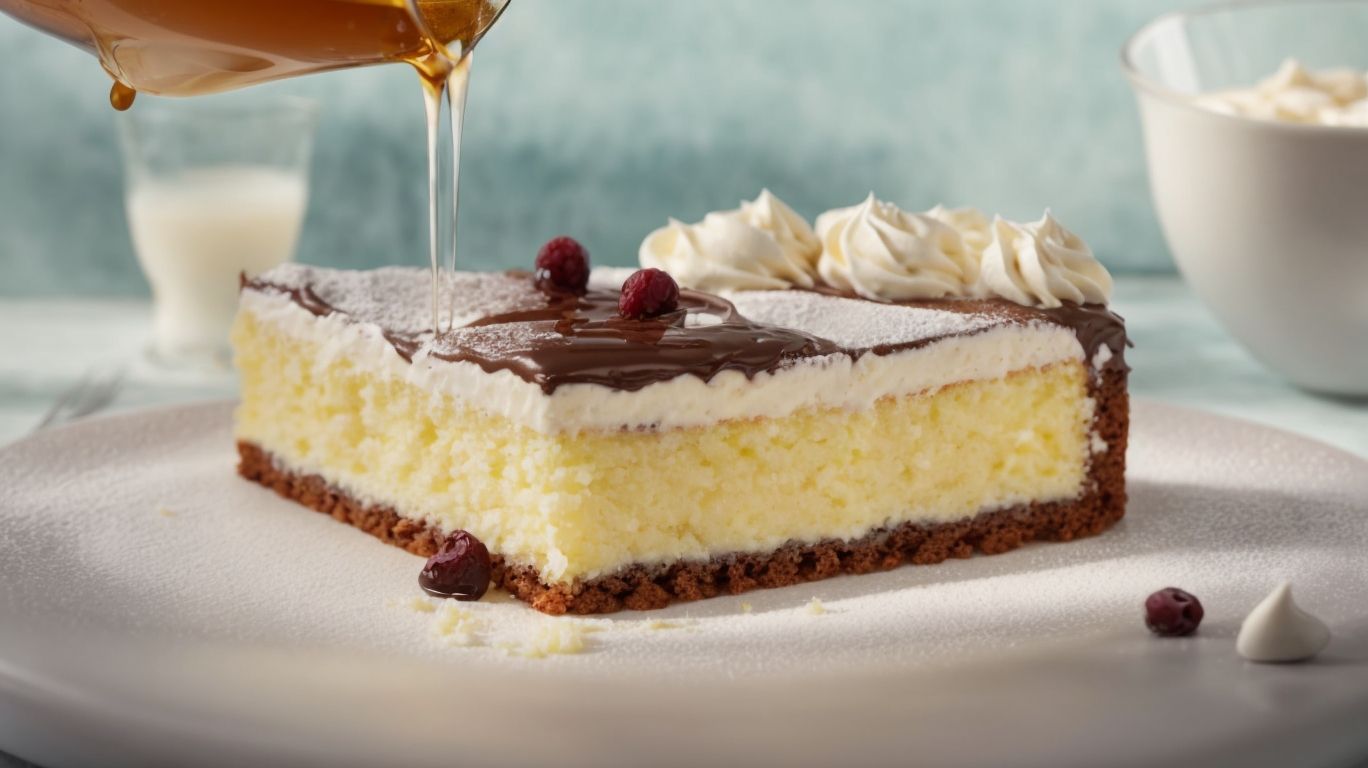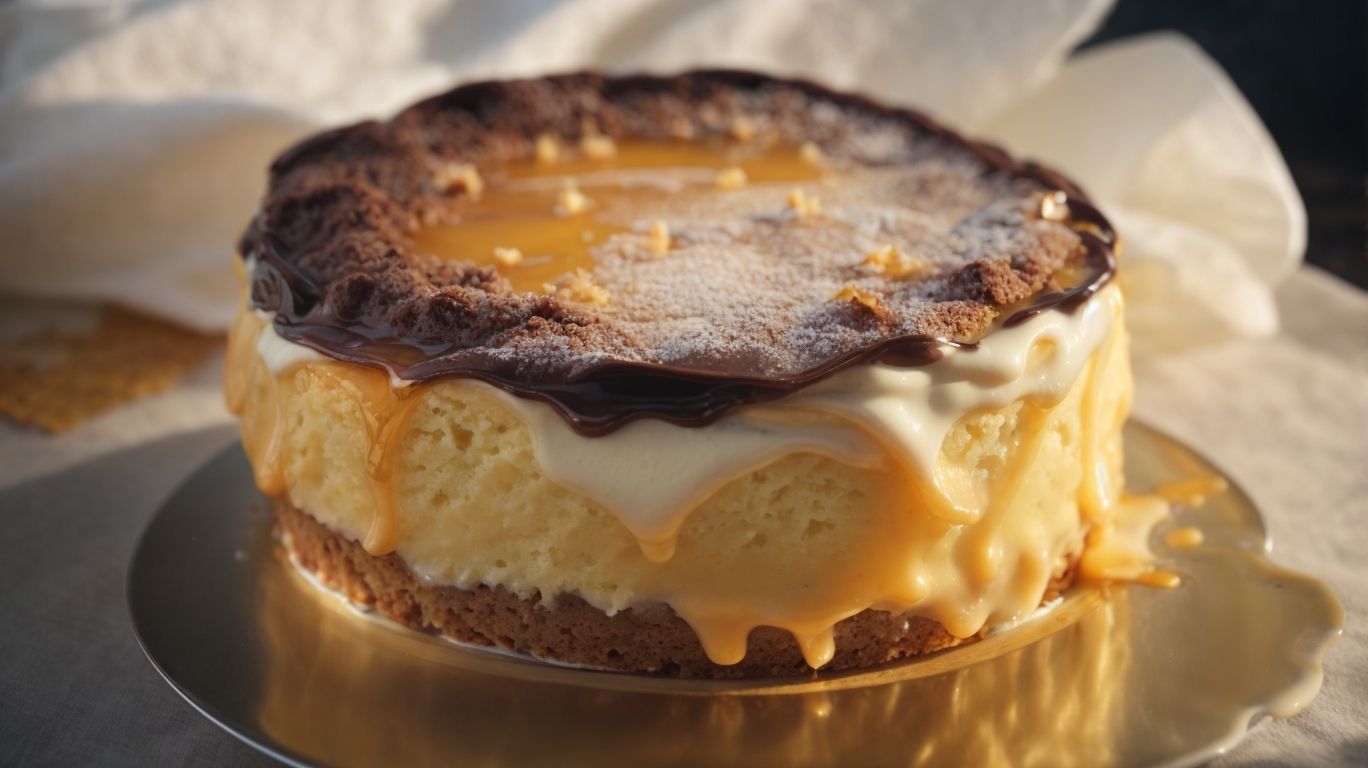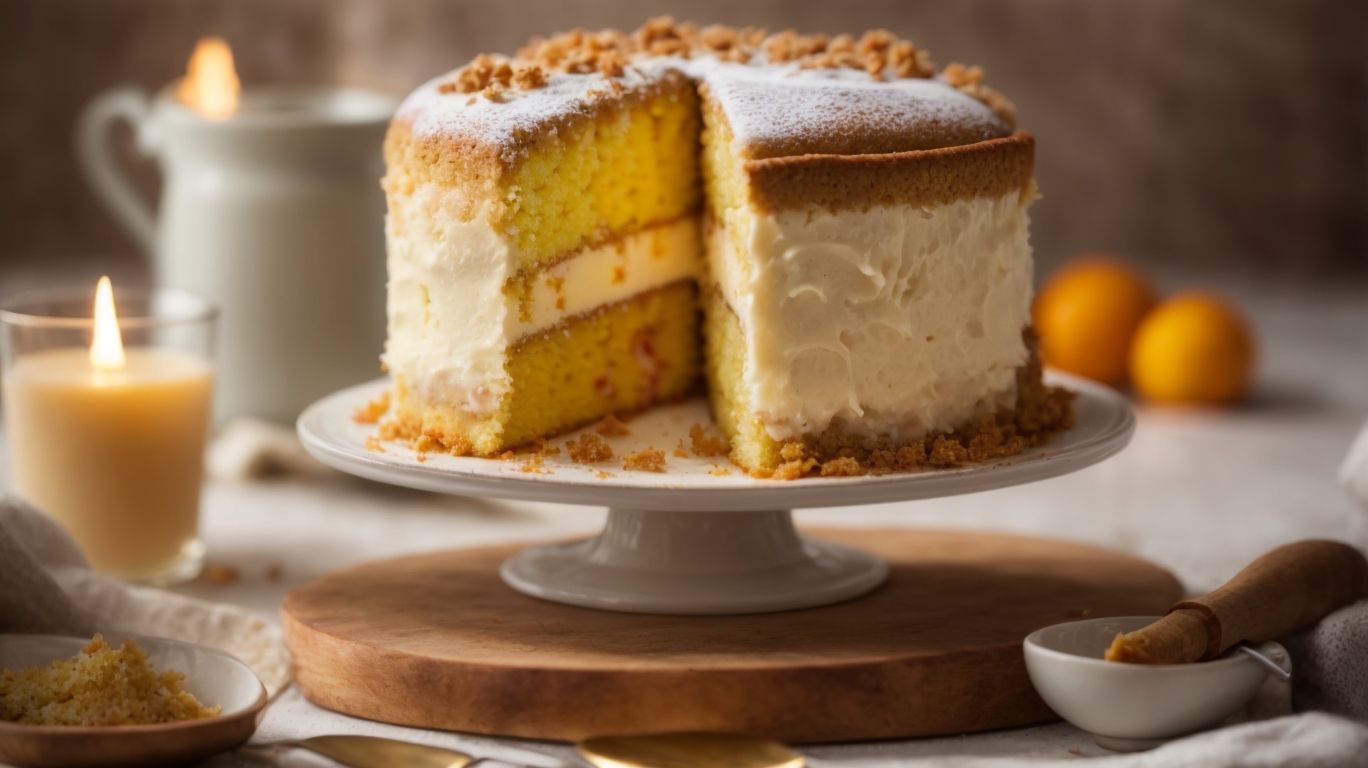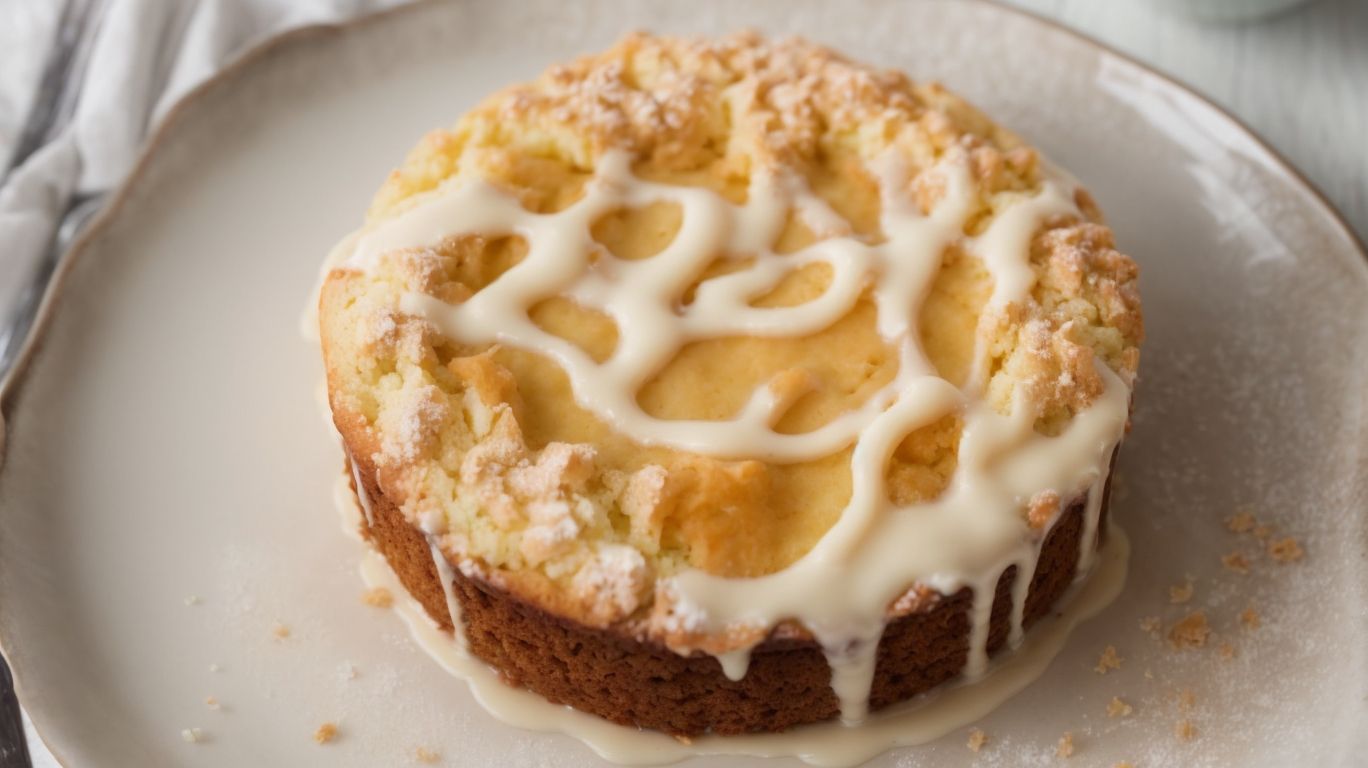How to Bake Undercooked Cake?
Are you tired of pulling a cake out of the oven only to find that it’s undercooked? You’re not alone!
In this article, we’ll explore the reasons behind undercooked cakes, how to identify if your cake is undercooked, and what you can do to salvage it.
From returning it to the oven to using alternative cooking methods like a microwave or stovetop, we’ve got you covered. Plus, we’ll share some tips to help prevent undercooked cakes in the first place.
Let’s dive in and rescue that cake!
Key Takeaways:
What Causes a Cake to be Undercooked?
Several factors can contribute to a cake being undercooked, including inaccurate oven temperatures, improper baking time, or using the wrong type of baking dish.
One common reason for undercooked cakes is when the oven temperature is not properly calibrated. If the temperature is too low, the cake may not bake through evenly, resulting in a gooey center. On the other hand, if the oven runs too hot, the exterior may bake too quickly while the middle remains uncooked.
- Choosing the right baking duration is vital in ensuring your cake is perfectly cooked. Remember that every recipe is different, and factors such as batter volume, oven type, and altitude can affect baking times.
The type of bakeware you use plays a significant role in how your cake cooks. Glass and dark-colored pans absorb heat differently, while non-stick pans may affect browning and cooking times.
How to Tell if a Cake is Undercooked?

Credits: Poormet.Com – Roger Allen
Determining if a cake is undercooked involves performing a simple doneness test, such as inserting a toothpick into the center of the cake.
As the cake bakes, the batter transforms into a fluffy and moist dessert. To ensure it is baked to perfection, you can also rely on visual indicators. A fully baked cake will pull away from the edges of the pan slightly, and the top should spring back when lightly touched. The edges of the cake should be golden brown, indicating the Maillard reaction has occurred, adding flavor and texture to the baked treat.
What Does an Undercooked Cake Look Like?
An undercooked cake may appear dense, have visible cake crumbles, and retain excess moisture compared to a fully baked cake.
When cutting into an undercooked cake, you may notice that the texture is heavy and compact, lacking the fluffy crumb structure of a properly baked cake. The cake crumbles easily, crumbling rather than holding its shape. The appearance of the cake could be sunken in the middle, with a wet and sticky interior indicating the high moisture content. These visual cues are key indicators that the cake needs more time in the oven to achieve the desired texture and taste.
How Does an Undercooked Cake Feel?
When touched, an undercooked cake might feel soft and sticky to the fingers, indicating that it requires more time in the oven to fully bake.
Another common tactile sensation of undercooked cakes is a slightly gummy or doughy texture that develops when the batter hasn’t been completely transformed into a fluffy, cohesive crumb.
Interestingly, the choice of baking dish can also influence these properties. A metal pan tends to conduct heat more efficiently, often resulting in a firmer crust and more even baking, while a glass dish may produce a softer, moister texture due to the slower rate of heat absorption.
What Does an Undercooked Cake Smell Like?
The aroma of an undercooked cake may be slightly raw or dough-like, lacking the rich, developed scent associated with fully baked cakes.
When a cake is not baked all the way through, the raw fragrance can be reminiscent of wet flour or dense batter. This uncooked state can also give off a pungent smell, with notes of yeasty undertones or even a hint of uncooked eggs lingering in the air.
Certain ingredients, like coconut oil, can contribute to a distinct scent when not fully baked, offering a tropical twist to the olfactory experience. Meanwhile, the raspberry buttercream frosting, if undercooked, may release a fruity aroma that is both alluring and slightly off-putting.
How to Fix an Undercooked Cake?

Credits: Poormet.Com – Bruce Allen
There are several methods to salvage an undercooked cake, ranging from returning it to the oven to utilizing alternative techniques like microwaving or creating cake pops.
One common approach to rescue an undercooked cake is to place it back in the oven, ensuring that the temperature is consistent and monitoring it closely to prevent overcooking. This method allows the cake to bake through properly without burning the outer layers.
Alternatively, you can use the microwave to quickly heat up the undercooked cake in short intervals, being careful not to dry it out.
Another creative solution is to repurpose the undercooked cake by turning it into delicious cake pops, transforming a baking mishap into a delightful treat!
Method 1: Return to the Oven
One effective method to fix an undercooked cake is by returning it to the oven for additional baking time, ensuring thorough cooking without risking an over-baked or dry cake.
It is crucial to follow a few key steps to ensure success in this process.
- Preheat the oven at the same temperature the cake was initially baked.
- Once the oven is ready, carefully place the undercooked cake back inside, preferably on the middle rack for even heat distribution.
- Monitor the cake closely to avoid over-baking; you can use a toothpick inserted in the center to check for doneness.
- Remember that over-baking can lead to a dry cake, so keep a close eye on the progress to achieve the ideal texture.
Method 2: Use a Microwave
Another quick fix for an undercooked cake is to utilize a microwave, allowing for rapid cooking adjustments and the creation of delicious treats like cake-in-a-mug.
When using a microwave to salvage an undercooked cake, it is crucial to remember that the process requires careful monitoring. Start by placing the cake back in the microwave-safe dish and heating it in 10-15 second intervals to prevent overheating. This method ensures that the cake is cooked thoroughly without drying it out. For a decadent twist, consider adding small pieces of chocolate to the batter before reheating. The chocolate will melt as the cake cooks, infusing each bite with rich, gooey goodness.
Method 3: Use a Stovetop
For those without access to an oven or microwave, fixing an undercooked cake on a stovetop is a viable option, allowing for controlled heat application and creative ingredient additions like ice cream or nuts.
When using the stovetop method, place the undercooked cake in a non-stick pan on low heat to evenly cook without burning the bottom. Adjusting the batter by adding a touch more flour can help absorb excess moisture, aiding in the cooking process. Patience is key as you carefully monitor the cake’s progress, flipping it occasionally for even cooking.
Once the cake is cooked through, consider topping it with a scoop of decadent vanilla ice cream for a delightful contrast of warm cake and cold creaminess. Chopped nuts like pecans or almonds can add a satisfying crunch and flavor dimension to each indulgent bite.
Method 4: Use a Steamer
Steaming an undercooked cake using a steamer can provide gentle, even heat distribution, and offer opportunities to infuse flavors like Halloween-themed lemonade while using a glass pan for optimal results.
The steaming method helps to rescue cakes that are undercooked in the oven by continuing the cooking process without the risk of burning the exterior. This gentle heat technique ensures that the cake cooks evenly from the inside out, preventing any dry or raw spots. Infusing the cake with lemonade not only adds a citrusy flavor but also keeps the cake moist and tender. Using a glass pan in the steamer allows for better visibility to monitor the cake’s progress without disrupting the cooking process.
Tips for Preventing Undercooked Cakes

Credits: Poormet.Com – Douglas Wright
To avoid undercooked cakes, consider using an oven thermometer for accurate temperature control, covering the cake with foil to prevent over-browning, and experimenting with plant-based alternatives for baking.
- Invest in an oven thermometer and always preheat your oven to the recommended temperature to ensure even baking.
- When using foil to cover the cake, tent it loosely over the top to allow air circulation and prevent condensation from forming.
- Try incorporating ingredients like applesauce, mashed bananas, or flaxseed meal into your cake batter for added moisture and texture without sacrificing taste.
Use an Oven Thermometer
An essential tip for avoiding undercooked cakes is to use an oven thermometer, ensuring that the temperature settings align with the baking requirements, reducing the risk of cake crumbs or uneven baking in a metal pan.
Oven thermometers play a crucial role in achieving baking perfection by providing precise temperature readings, unlike the thermostat often found in ovens which can be inaccurate. By placing an oven thermometer inside, you can verify if the heat matches what’s needed. This accuracy is vital for delicate baked goods like soufflés, where even a slight temperature discrepancy can lead to disaster.
Check the Cake Before the Recommended Baking Time
Before the specified baking duration ends, it’s advisable to check the cake’s progress to avoid undercooking, ensuring proper baking in the chosen dish, whether ceramic or other materials, and considering ice cream as a complementary topping.
Checking the cake intermittently can prevent burning or uneven baking, leading to a perfectly moist and fluffy texture. Monitoring the top of the cake for a golden hue and inserting a toothpick for doneness are essential steps.
A ceramic dish provides even heat distribution, resulting in a more consistent outcome compared to metal pans. The material’s heat retention also helps keep the cake warm post-baking.
Pairing the cake with ice cream adds a delightful contrast of temperatures and textures, elevating the dessert experience to a new level.
Adjust the Oven Temperature
In cases of undercooked cakes, adjusting the oven temperature slightly higher can help achieve proper doneness, ensuring that the batter cooks through, and frosting or chocolate toppings set correctly.
It is crucial to monitor the oven closely when making temperature adjustments to avoid overcooking the cake. Consistency of the batter plays a significant role in ensuring even baking; a thicker batter will require a lower temperature and longer cooking time. Consider the type of frosting used – cream cheese frosting may necessitate a cooler oven to prevent melting, whereas buttercream can withstand higher temperatures. Experimenting with these factors while maintaining attention to detail will help you master the art of baking a perfect cake!
Use the Right Pan Size
Selecting the appropriate pan size for baking is crucial to prevent undercooked cakes, with glass pans offering even heat distribution and options for using ingredients like coconut oil or raspberry buttercream frosting.
Using the right sized pan ensures that the cake bakes uniformly, resulting in a perfectly moist and fluffy texture. Glass pans not only distribute heat evenly but also have the advantage of allowing you to monitor the browning of the cake during baking. This can help avoid overbaking, which can make the cake dry.
Regarding flavor, ingredients like coconut oil add a subtle tropical taste and moistness to the cake, while raspberry buttercream frosting provides a delicious tangy sweetness that complements various cake flavors.
Avoid Overmixing the Batter
Overmixing the cake batter can lead to dense textures, cake crumbs, and affect the final result, so it’s crucial to blend ingredients adequately, avoiding excessive mixing for optimal outcomes, and considering flavor enhancements with raspberry buttercream frosting or nuts.
When you overmix the batter, you disrupt the delicate structure that gives cakes their light and airy texture. This can result in a tough, chewy consistency that nobody wants in their desserts. To avoid this, gently fold in the ingredients until just combined to maintain that perfect crumb. Flavors can be accentuated with the addition of a luscious raspberry buttercream frosting, adding a fruity tang that pairs beautifully with the sweetness of the cake. Sprinkling some chopped nuts on top not only provides a pleasant crunch but also introduces a nutty undertone that elevates the overall taste profile.
Use the Right Ingredients
Selecting high-quality ingredients like coconut oil, nuts, and raspberry buttercream frosting can enhance the cake’s flavor, texture, and overall baking performance, ensuring delicious results.
Using premium ingredients not only adds depth and richness to the cake but also elevates its flavor profile to new heights. Coconut oil, for example, brings a subtle tropical undertone and moistness to the crumb, giving a delightful texture.
Incorporating a mix of nuts such as pecans, almonds, or walnuts adds crunch, richness, and a nutty aroma that complements the sweetness of the cake.
Regarding the finale, a decadent raspberry buttercream frosting not only adds a burst of color but also introduces a tangy contrast that balances the sweetness of the cake, creating a harmonious blend of flavors.
Follow the Recipe Instructions Carefully
Adhering to the recipe instructions diligently is essential for baking success, ensuring that cake ingredients are combined correctly, and considering creative additions like ice cream or lemonade for unique flavors.
An important aspect of following a cake recipe closely is the accurate measurement of ingredients; even a slight miscalculation can significantly impact the texture and taste of the final product. Whether it’s the perfect balance of flour, sugar, and eggs or the precise amount of baking powder, each component plays a crucial role in achieving a delicious cake.
Incorporating innovative elements such as a scoop of ice cream or a splash of lemonade can introduce delightful and unexpected flavors that elevate the baking experience to new heights.
Frequently Asked Questions
1. How do I know if my cake is undercooked?
You can tell if your cake is undercooked by inserting a toothpick into the center. If it comes out clean, the cake is fully cooked. If it comes out with batter or crumbs, it needs more time in the oven.

